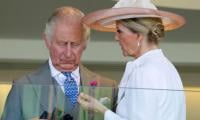ISLAMABAD: In the late 1990s, Islamabad-based entrepreneur Sheikh Ejaz Asghar heard rumblings from his recently established Chinese contacts in the Pakistani capital. Beijing was going to finance several major infrastructure projects and its state-owned enterprises (SOEs) would need local service providers, both to help navigate their new operating environment and procure the vast volumes of materials that would be needed.
Acting on this timely tip-off, Asghar began visiting China in 2000 to establish relationships with SOEs and manufacturers of materials he would need to import. He also learned Chinese, to facilitate his new-found business relationships and strengthen his hand in negotiations. “It was a question of taking the initiative,” he said. “You never get anywhere unless you make the effort, so that’s what I did,” reported foreign media.
By the time President Xi Jinping unveiled the $60 billion China-Pakistan Economic Corridor (CPEC) to showcase his signature Belt and Road Initiative in 2015, Asghar’s family business Project Solutions was flourishing. It had already worked with Chinese SOEs on an impressive portfolio of major power-sector projects, starting with Huaxing Construction on the Chashma nuclear power complex, and had diversified into the construction industry.
Asghar is particularly proud of the work Project Solutions did for China State Construction Corporation during the construction of the new Islamabad International Airport, which opened in 2018. “We supplied them more than 50 different materials in huge volumes. Some were locally sourced. Others were imported from China and sold to the Chinese, which is no mean feat,” Asghar said, grinning.
But the completion of about $18 billion of CPEC “early harvest” projects between 2015 and the general election three years later had unforeseen repercussions for Pakistan’s shaky macroeconomy, even though GDP growth topped 5.5 per cent by 2018.
The massive influx of Chinese machinery, coupled with a surge in consumer appetites for imported fuel and consumer goods, drove up Pakistan’s trade and current account deficits to unsustainable levels.
This prompted the newly elected administration of Prime Minister Imran Khan to devalue the rupee by almost half, slash spending on development, and throttle imports by raising customs duties and imposing administrative restrictions.
The austerity programme could not have come at a worse time for the Pakistani businesses which had boosted their productivity to meet the projected needs of the 15-year CPEC programme and the knock-on effect it was expected to have on the wider economy.
With no new major CPEC infrastructure projects initiated by the Khan administration, and existing projects rapidly being completed, many businesses were left with surplus manpower and production capacity. Losing money, they had little choice but to scale back production and lay off thousands of workers.
The slowdown will almost certainly be exacerbated by the coronavirus outbreak in China coinciding with the Lunar New Year. The Lahore chapter of the Pakistan Medical Association said that thousands of Chinese workers involved in CPEC and private-sector projects had travelled home for the holiday period. It said their influx back to Pakistan had begun and warned that “some of these Chinese may be carrying latent and/or active coronavirus”.
Concerns about the spread of the disease have also been expressed by the head of the 10,000-strong special police unit assigned to protect 4,000 Chinese nationals working on CPEC projects in populous eastern Punjab province.
The industrial area of Islamabad in which the offices of Asghar’s Project Solutions are located has gone from being a hive of construction material productivity to being a ghost town. It was much the same story wherever CPEC infrastructure projects had been completed, Asghar said. “You only have to track the construction of motorway projects to see it. Wherever they were built, a lot of employment was generated, but as soon as they were completed, the jobs dried up,” Asghar said.
“But it isn’t the fault of the Chinese,” he hastened to add. “We Pakistanis are just not organised enough to take advantage of the opportunities created by the infrastructure they have built. Pakistan is now where China was in the late 1980s, except that we still don’t have a plan.”
At the root of the problem lies Pakistan’s inability to grow its foreign exchange inflows. Because CPEC coincided with the end of a decade-long Taliban insurgency, there was little foreign direct investment from developed economies.
Meanwhile, domestic entrepreneurs were reluctant to invest in boosting the production and diversity of Pakistan’s very narrow range of exportable goods, partly because the government did not bow to their demands for subsidised energy, and tax breaks for capital investment.
Instead, they focused on opportunities arising from the growth spurt fuelled by CPEC, and have since seen their profitability tumble as the austerity programme pushed consumer inflation and interest rates into double-digit territory.
From nearly six per cent two years ago, Pakistan’s GDP growth is expected to tumble to as low as 2.1 per cent in the current financial year, which ends in June, according to a UN report published last week.
The macroeconomic imbalances inherent in Pakistan’s economy would remain a serious impediment for the foreseeable future, the Asian Development Bank said in a research paper published in December. “In the current structural and product specialisation circumstances, if Pakistan’s economy is to grow faster than 3.8 per cent in the medium term, external imbalances will occur,” it said.
Nonetheless, Khan’s government is desperate to reignite economic growth and create jobs for Pakistan’s enormous youth bulge. The UN Development Programme estimates that 64 percent of Pakistan’s 208 million people are aged under 30, while 29 per cent are aged between 15 and 29. This is creating an influx of 1.5 million to two million new employment aspirants every year, the Pakistani government estimates, and this number is projected to continue to rise up to 2050.
With Western firms still generally reluctant, Chinese firms remain Pakistan’s best bet for foreign investment in industrial production. However, they have been in no hurry to plunge into its potentially lucrative market on the back of CPEC, despite being encouraged to do so by Beijing.
Vaseem Baig, a Lahore-based trader, has worked on both sides of the fence since moving to Qingdao in 2003 to source inputs for Pakistan’s rubber tyre producers. “As best I know, I was the first Pakistani businessman to take up residence there,” he said. In 2007, he co-founded Qingdao Hifortune Rubber and Mold Co, a small trading venture specialising in the supply of technology, machinery and materials to South Asian manufacturers of rubber tyres.
“China has been a godsend for small Pakistani business owners. Many started out by banding together to go to China with enough money to stuff a container with cheap consumer goods like toys. It has kept the wholesale markets of central Lahore afloat,” Baig said.
Baig’s core business, rubber tyres, is a good example. Pakistan’s market has been one of the fastest growing in the region, because of the rapid expansion of its urban road and national highway networks, particularly under the CPEC. This has been accompanied by a boom in private vehicle ownership, particularly of small-engined motorcycles.
Pakistani manufacturers have been presented with another opportunity to crack the Chinese market, by way of a more generous free-trade agreement which came into effect on January 1. Under it, Chinese tariffs on the 313 products that Pakistan specialises in have been abolished.
Gang involved in massive visa scam, providing fake documents after collecting hefty amounts from victims
Pemra will become functional as per notification of appointment of these members
A three-member bench of the apex court headed by Chief Justice Yahya Afridi, hears appeals
Initial assessments suggest that around 30 percent of the bridge sustained damage







